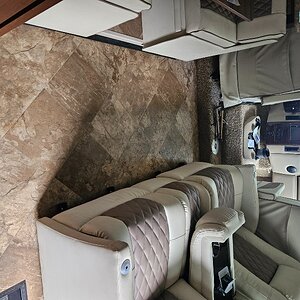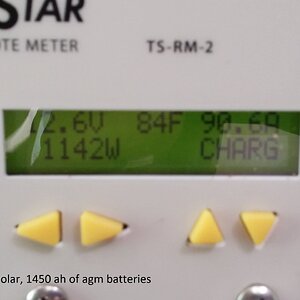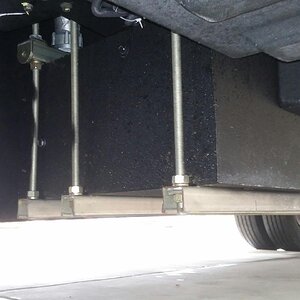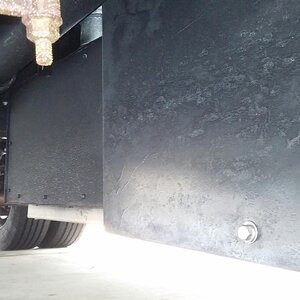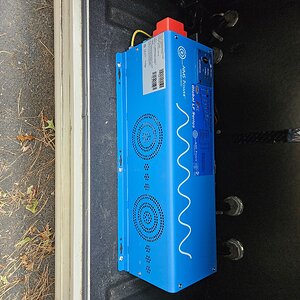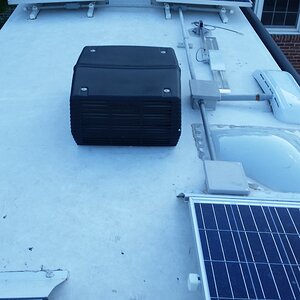If you want as big a vehicle as you’ll be comfortable with, you likely want a 43-45’ tag axle Class A. In terms of size, that’s about as. If as they come - though I have seen even larger 5th wheels. One thing I caution however if that if you belief that bigger is better is based in the notion that mass = safety, that is not necessarily true with RVs. Almost all of your safety in an RV comes from due diligence and responsible driving, no matter the type of RV you have. Larger sizes tend to get you more creature comforts (dishwasher, washer & dryer, king size bed, bath and a half, etc. The larger in size you however, the closer to the beaten path you must stay.
Another consideration is whether you and your wife might any any point be bringing along guests such as adult children or small grandchildren for trips. If so, they’ll need a place to rest their heads so consider models that might have an overhead bunk, jackknife sofa, hide-a-bed sleeper sofa, convertible dinette bed or even bunks, depending on your needs.
You need a tow vehicle. Your wife will probably come to that conclusion the first time she realizes that you need to completely tear down camp and pack up anytime you want to drive anywhere from your campsite. Need groceries? Pack it up. Want to visit that near overlook but it’s 20 miles away? Pack it up. What if the route to that overlook can’t handle a 40’ motorhome? Guess you’re not going there - but you could have if you were towing a normal vehicle. It’s really not complicated to do, don’t be intimidated by it.
We have a 44’ diesel pusher and my wife drives all the time. These more modern monsters are surprisingly easy to control and most of your driving is down a highway or interstate. There is the occasional tricky maneuver into a fuel stop or campground, but as with any vehicle you learn how it maneuvers with experiences my wife still can’t park it, but she can’t parallel park the truck either. We’re working on it!
My advice as you begin shopping is:
1. Decide on features and floorplans based on your needs and wants. Sit down and each of you make a top 10 list of features and compare. The features you agree on are must-haves. Where you differ are compromises.
2. Based on the results of number 1, decide on a manufacturer and floor plan. In the class A Space, I’m partial to Newmar and Entegra. If money is no object then I’d go with a Newell, Marathon or Foretravel.
3. If you are buying used, get it inspected by an NRVIA certified inspector. You should hire them and and pay them, not the dealer. You want the inspector beholden to your interests, not the dealer’s. Don’t use an inspector recommended by a dealer. They likely do a lot of business with them and might ignore some things in order to stay in good standing with the dealer. You find em. You hire em. Use the results of that report to inform your negotiations. If the report says no problems, they need to inspect it again. Every RV has problems - even brand new ones.
4. Know what you are getting into. RVs are expensive, depreciating assets that are in constant need of repair and maintenance - just like a boat but not quite as expensive. Buying new or used in this market means that you will absolutely never make any money off of your unit. You are purchasing an experience. That is the only sane way to look at it. It’s expensive to buy. Its expensive to sell. It’s expensive to operate. It’s expensive to not operate. The experiences are priceless.
5. Be willing to compromise. You will not get an RV with every single feature you want. Many can be added after market. Get the RV you can comfortably live with and be willing to turn a wrench or two to make it how you want it. The things you can’t easily change or add are the things that must be there on day zero (floorpan, engine, generator, etc). The things you can change or add later are compromises (reverse osmosis system, satellite TV, internet modem, electric gate valves, stainless steel trim etc).
6. This market is hawt, for both new and used. Be ready and willing to move quickly to secure the unit you want once you’ve found it.
7. Know that the first year is full of repairs and tweaks. We call it the shakedown period. Things are going to break and need adjusting. Most of it should be covered under warranty. The hard part is finding all the flaws before your warranty lapses. Use it as much as possible in the first year so that you can find and report all if the issues while your warranty is active. They might not be fixed in the first year but if you report them while the warranty is active, they should be covered under the warranty.
8. Shop around. Make dealers compete for your business. NIRVC is a great dealer in my experience that beat everyone and I heavily shopped my purchase.
9. Use it. Don’t let it sit. RVing is an amazing experience, filled with endless freedom and incredible experiences that most never have the opportunity to experience. You are very lucky to be able to do it. So take every advantage.
10. There are going to be bad days. Days you really question whether or not you made the right decision or just wasted a boatload RV load of money. There will be good days. Days when you can’t imagine being without an RV ever again. RVing is as much about the journey as it is the destination. Have fun with it and don’t take life too seriously. You’re never getting out alive.


